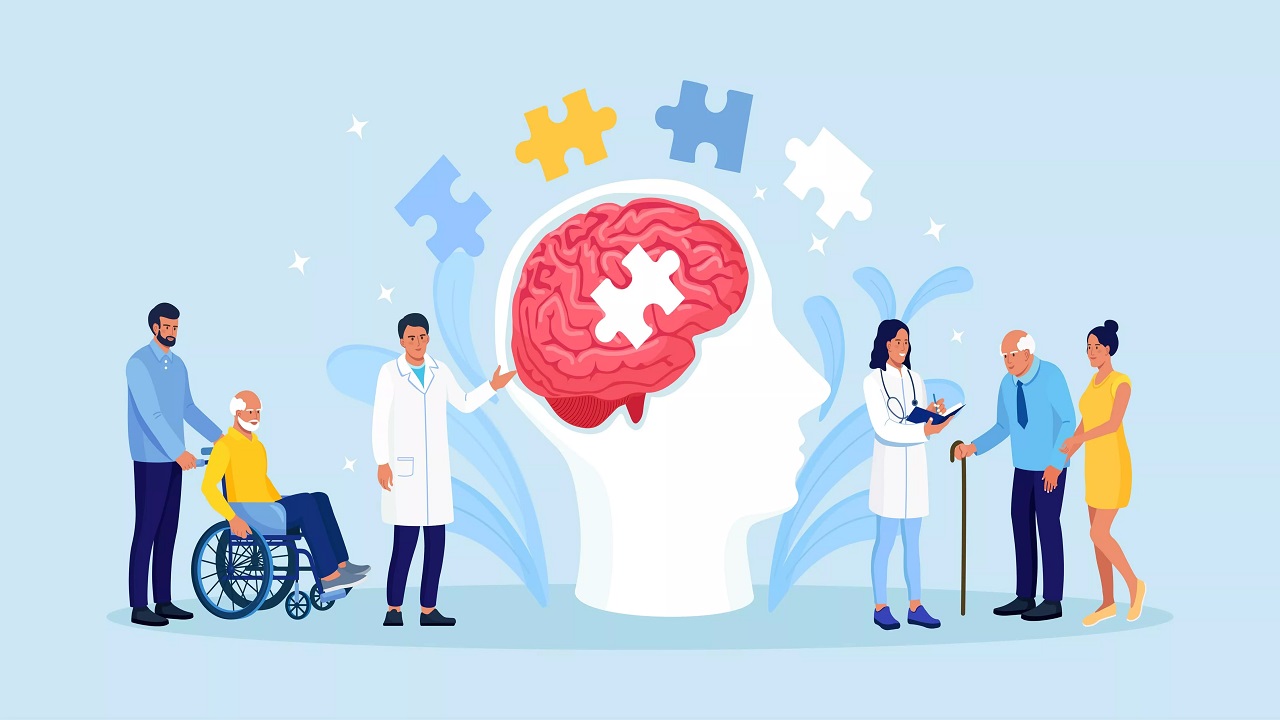Parkinson’s Disease: From Symptoms to Latest Research
Context
Parkinson’s disease (PD) is a progressive neurodegenerative disorder that primarily affects movement. It occurs due to the gradual loss of dopamine-producing neurons in the substantia nigra, a brain region responsible for movement control.
- First identified by Dr. James Parkinson in 1817, it remains an incurable condition.
- Most common among older adults, typically appearing after 60 years.
- Men are more affected than women.
- India accounts for 10% of the global Parkinson’s disease burden.
Causes and Mechanism
The exact cause of PD is unknown, but research suggests a combination of genetic and environmental factors.
- Loss of dopamine-producing neurons leads to movement difficulties.
- By the time symptoms appear, 60–80% of these neurons are already lost.
- Exposure to toxins, pesticides, and heavy metals may increase risk.
Symptoms of Parkinson’s Disease
-
Motor Symptoms (Affecting Movement):
- Bradykinesia – Slow movement.
- Tremors – Shaking of hands or legs, even at rest.
- Muscle Rigidity – Stiffness in limbs.
- Impaired Balance and Posture – Increased risk of falls.
-
Non-Motor Symptoms (Affecting Other Functions):
- Cognitive Decline – Memory issues, confusion.
- Mental Health Issues – Depression, anxiety.
- Sleep Disturbances – Insomnia, excessive sleepiness.
- Sensory Problems – Loss of smell, pain, fatigue.
Who is at Risk?
- Age – Common after 60 years, but early-onset cases exist.
- Gender – Men are more likely to develop PD.
- Family History – Genetic factors may play a role.
- Environmental Factors – Toxin exposure, head injuries increase risk.
Diagnosis
Currently, no definitive blood or imaging test exists for Parkinson’s disease.
- Diagnosed based on clinical symptoms and neurological examination.
- MRI or PET scans may be used to rule out other disorders.
Treatment Options
While PD has no cure, treatments help manage symptoms and improve quality of life.
-
Medications:
- Levodopa/Carbidopa – Most effective, increases dopamine levels.
- Dopamine Agonists – Mimic dopamine function.
- MAO-B Inhibitors – Slow dopamine breakdown.
-
Surgical Interventions:
- Deep Brain Stimulation (DBS) – Electrodes implanted in the brain help regulate movement.
-
Therapies & Lifestyle Changes:
- Physical therapy, speech therapy, exercise, and diet improve symptoms.
Recent Research & Advancements
Scientists are exploring genetic and neurological factors to improve diagnosis and treatment.
- Linkage Analysis – Identifies rare genetic mutations, including RAB32 Ser71Arg.
- Genome-Wide Association Studies (GWAS) – Found 92 genetic locations linked to Parkinson’s.
World Parkinson’s Day
- Observed on April 11 every year to raise awareness about the disease.
Other Neurological Disorders Related to PD
- Alzheimer’s Disease – Memory loss and cognitive decline.
- Multiple Sclerosis (MS) – Autoimmune nerve disorder.
- Huntington’s Disease – Genetic movement disorder.
- Cerebral Palsy – Movement impairment from birth.
- Guillain-Barré Syndrome – Nerve damage due to immune response.
Conclusion
Parkinson’s disease is a chronic, progressive condition that severely affects movement and daily life. Early diagnosis and proper treatment can slow its progression and improve quality of life. With advancements in research, medications, and therapies, there is hope for better management and future treatments.




Comments (0)